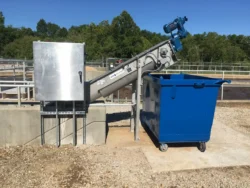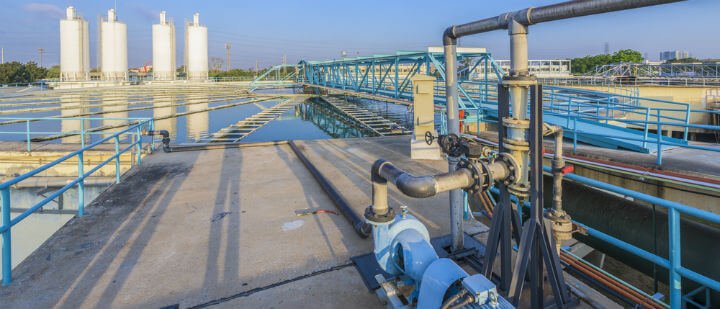Nassau County Sewer District 3 – Cedar Creek Sewage Treatment Plant

Nassau County Sewer District 3: Cedar Creek Sewage Treatment Plant
Introduction
The Cedar Creek Sewage Treatment Plant (STP), operating under Nassau County Sewer District 3, serves as a critical infrastructure element for managing wastewater needs in Nassau County, New York. Established in the mid-1970s, Cedar Creek has evolved over the decades to accommodate a growing population, incorporate advanced treatment technologies, and meet stringent regulatory requirements. This article delves into the various aspects of the Cedar Creek STP including the population it serves, the volume of wastewater treated, its treatment capacity, recent news, key projects, and community engagement efforts.
Population Served
Nassau County Sewer District 3 encompasses a diverse and populous area. The Cedar Creek STP specifically serves several municipalities within the county, including but not limited to, portions of Merrick, Wantagh, Bellmore, Seaford, and parts of other neighboring communities. Overall, the plant serves approximately 600,000 residents.
This area is primarily residential, with a mix of commercial and small-scale industrial establishments. The substantial population density necessitates a robust and efficient wastewater treatment plant. Cedar Creek is designed to manage this demand while minimizing environmental impact.
Wastewater Volume and Treatment Capacity
The Cedar Creek STP treats an average of 54 million gallons of wastewater per day (MGD). This figure can fluctuate depending on various factors such as seasonal changes and rainfall patterns. During wet weather conditions, due to infiltration and inflow into the sewer system, the volume can peak to higher levels, necessitating flexibility and substantial capacity in the treatment processes.
To accommodate these variances, the plant is equipped with a design capacity of 72 MGD, which provides a buffer to handle peak flows. This design capacity ensures that the plant can efficiently process wastewater even during heavy rain events, safeguarding against potential overflows and environmental hazards.
Treatment Process
Cedar Creek employs a multi-stage treatment process to ensure that the wastewater discharged into the South Shore Estuary is of high quality and meets all environmental standards. The treatment process can be broken down into the following stages:
-
- Preliminary Treatment: Wastewater entering the plant first undergoes screening to remove large debris (such as sticks, rags, and plastic) and grit removal to eliminate sand and small stones that might damage equipment.
- Preliminary Treatment: Wastewater entering the plant first undergoes screening to remove large debris (such as sticks, rags, and plastic) and grit removal to eliminate sand and small stones that might damage equipment.
-
- Primary Treatment: In this stage, the wastewater flows into primary clarifiers where heavier solids settle at the bottom and are removed as sludge, while lighter materials float to the surface and are skimmed off.
- Primary Treatment: In this stage, the wastewater flows into primary clarifiers where heavier solids settle at the bottom and are removed as sludge, while lighter materials float to the surface and are skimmed off.
-
- Secondary Treatment: This involves biological treatment processes where microorganisms break down organic matter. The Cedar Creek STP uses activated sludge treatment with aeration basins where air is pumped in to support microbial activity. Following this, the wastewater passes through secondary clarifiers to settle out and remove the biological solids.
- Secondary Treatment: This involves biological treatment processes where microorganisms break down organic matter. The Cedar Creek STP uses activated sludge treatment with aeration basins where air is pumped in to support microbial activity. Following this, the wastewater passes through secondary clarifiers to settle out and remove the biological solids.
-
- Tertiary Treatment: In some cases, additional treatment steps are employed to further remove nutrients such as nitrogen and phosphorous that can be detrimental to aquatic ecosystems.
- Tertiary Treatment: In some cases, additional treatment steps are employed to further remove nutrients such as nitrogen and phosphorous that can be detrimental to aquatic ecosystems.
-
- Disinfection: Finally, the treated water is disinfected using chlorine or ultraviolet light to kill any remaining pathogens before being released into the South Shore Estuary.
Recent Local News
State Environmental Awards
In recent local news, the Cedar Creek STP has garnered attention for its excellence in environmental stewardship. For instance, the plant was awarded a state environmental accolade for its advancements in reducing nitrogen discharges, which are critical for protecting marine life and water quality in the estuary.
Infrastructure Grants
Moreover, Nassau County has been the recipient of significant state and federal grants aimed at upgrading wastewater infrastructure. These grants have enabled the county to initiate several projects at Cedar Creek to enhance resilience against climate change, including storm surges and flooding.
Key Projects
Resilience Upgrades
In response to the increasing threat of climate change, Cedar Creek has embarked on an ambitious project to bolster the plant’s resilience against storm surges and flooding. This involves the construction of flood walls, upgrading pumping stations, and enhancing emergency response protocols. The goal is to ensure continuous plant operations during and after extreme weather events.
Energy Efficiency Initiatives
Another significant project is the implementation of energy-efficient technologies. This includes upgrading pumps, blowers, and aeration systems to reduce energy consumption. The plant is also exploring the use of renewable energy sources such as solar panels and biogas recovery from sludge to power its operations. These initiatives are expected to reduce operational costs and the plant’s carbon footprint.
Advanced Nutrient Removal
Cedar Creek is also focusing on advanced nutrient removal processes to meet stricter regulatory requirements. A major project under this initiative involves upgrading the biological treatment systems to enhance nitrogen and phosphorous removal. This is crucial for preventing eutrophication in the estuary, which can cause harmful algal blooms and deteriorate water quality.
Community Engagement
Public Education Programs
Nassau County and the Cedar Creek STP have prioritized community engagement as a cornerstone of their operations. The plant regularly hosts public tours and educational programs for schools, community groups, and residents. These tours provide a firsthand look at the treatment processes and the importance of wastewater management in protecting public health and the environment.
Stakeholder Involvement
The Cedar Creek STP maintains an open dialogue with stakeholders including local government officials, environmental groups, and residents. Public meetings and forums are held to discuss upcoming projects, address concerns, and gather input on proposed initiatives. This collaborative approach ensures transparency and fosters community trust and support.
Environmental Stewardship Initiatives
Cedar Creek is actively involved in local environmental stewardship initiatives. The plant partners with environmental organizations for cleanup activities, habitat restoration projects, and water quality monitoring in the South Shore Estuary. This engagement not only benefits the local ecosystem but also reinforces the plant’s commitment to sustainability.
Social Media Outreach
In the digital age, social media has become a vital tool for community engagement. Cedar Creek maintains an active presence on platforms like Facebook and Twitter, providing updates on plant operations, upcoming projects, and environmental tips. These platforms also serve as a channel for residents to ask questions and provide feedback.
Conclusion
The Cedar Creek Sewage Treatment Plant under Nassau County Sewer District 3 is a pivotal institution in the region’s infrastructure. Serving a population of approximately 600,000 people, the plant effectively manages an average of 54 million gallons of wastewater daily. With a design capacity of 72 MGD, Cedar Creek is well-equipped to handle peak flows and ensure high-quality treated water is discharged into the South Shore Estuary.
The plant’s recent accolades, infrastructure grants, and key projects highlight its commitment to excellence and innovation in wastewater treatment. From resilience upgrades to energy efficiency initiatives and advanced nutrient removal, Cedar Creek continuously strives to meet and exceed regulatory requirements while safeguarding the environment.
Community engagement remains a cornerstone of Cedar Creek’s operations. Through public education programs, stakeholder involvement, and environmental stewardship initiatives, the plant fosters a collaborative relationship with the community it serves. Cedar Creek’s active social media presence further enhances its outreach efforts, ensuring transparency and open communication with residents.
As Cedar Creek continues to evolve and adapt to new challenges, it stands as a model of effective and sustainable wastewater management, contributing to the health and well-being of Nassau County and its residents.



